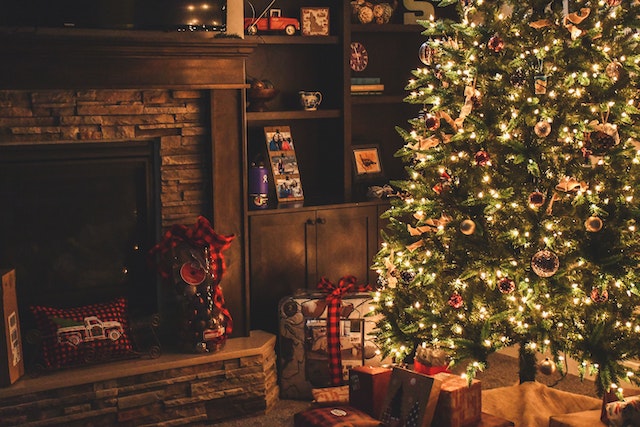Whether you opt for a real or a faux one, expect to pay 5 to 15 percent more this holiday season
Christmas tree prices, whether for faux or real ones, are rising this holiday season as inflation spills over into decorations. How bad? Expect to pay anywhere from 5 to 15 percent more.
“Christmas trees are no different than any other consumer product,” says Marsha Gray, executive director of the Real Christmas Tree Board. “Everything is seeing inflation.”
As of October, prices for consumer goods are up 7.7 percent compared to a year earlier, as lingering supply chain issues and elevated input costs (expenses businesses incur to run operations) are driving prices higher.
Seventy-one percent of Christmas tree growers surveyed by the Real Christmas Tree Board this fall said they expect wholesale prices to increase between 5 and 15 percent in 2022. Some of that is being passed on to consumers. The median average for a real fir, pine or spruce tree was $69.50 in 2021. Assuming a 10 percent increase, consumers will spend $76.45 this year.
On the faux side, prices are up on average between 7 and 10 percent for medium- and high-quality artificial trees, and flat year-over-year at the lower end of the market, says Mac Harman, CEO and founder of Balsam Hill, a Christmas tree and holiday decor retailer. At the sub-$300 price point, however, Harman says consumers are getting less for more. ”Quality has been taken out of the moderately priced trees,” Harman says. “There are fewer lights, fewer branches or a tree is 6 inches narrower.”
Why do some trees cost more than others?
There are several reasons Christmas tree prices vary for both artificial and real ones. Location is a big factor if you’re shopping for a real tree. People who live in regions that don’t grow trees pay more because of transportation and labor costs. The farther away, the more you’ll pay. Buying a Christmas tree in New York City could set you back at least $100. If you’re in a grower state like North Carolina it’s around $70 and up.
The size of the tree is another factor, with height dictating how much you pay. “If you are looking for an 8-foot tree and buy a tree one foot shorter or taller, it’s a big difference in price,” Gray says.
The choice of species also comes into play. Types of trees are priced differently, whether it’s a spruce or a fir. Some have to be trucked a greater distance or are in more demand, which will make them more expensive than others, says Gray.
On the faux side, prices are based on what the tree is made of, whether it comes lit and its height. The more realistic it looks, the taller it is and the more technology is built into it, the pricier it will be.
Artificial or real?
If you’re deciding between an artificial and a real Christmas tree, there are some things to consider. Price is a big one. A faux tree may be more expensive, but it is an investment, something you’ll have for several years. A Christmas tree can last only about four weeks before it has to be recycled.
Your physical capabilities might be a factor. The majority of Americans have artificial trees, and a big reason is that it’s convenient to purchase and set up. You can buy a tree online and have it delivered to your door. You don’t have to worry about getting it on the roof of your vehicle and into the house. Many artificial trees come with lights attached. With a real tree you have to string on the lights, which could be tough for some older adults.
How to save
Whether you go real or fake, there are ways you can save, including these strategies:
1. Comparison shop. Prices vary for both artificial and real Christmas trees, so try to shop around. Many Christmas tree farms have websites and/or social media accounts where they list the type of their trees, quantity and prices. Big-box retailers like Lowe’s and Home Depot sell artificial and real Christmas trees, and post their prices online.
2. Be flexible. Since species or needle type, height and lights determine the price, the more flexible you are the better. You may have your heart set on an 8-foot Christmas tree, but if you go down to a 6-foot one, you can save, Gray says.
3. Seek out deals. Black Friday and Cyber Week may be over, but there are still deals and discounts to be had, largely online. Free shipping coupons and discount codes are out there. The longer you wait to purchase your Christmas tree, the more it will be discounted, but you’ll have less inventory to choose from. If you can delay until next year, excess inventory will be on sale once the season is over. “Replacing an artificial tree during the clearance season is a good strategy,” Harman says.
4. Skip it altogether. The holidays are about faith, giving back and spending time with family, friends and loved ones. Forgoing a Christmas tree in your living room shouldn’t put a damper on that. If you can’t afford it or it’s too much work, skip it altogether. Get a tabletop tree or a holiday plant instead.
https://www.aarp.org/money/budgeting-saving/info-2022/inflation-drives-up-christmas-tree-prices.html

